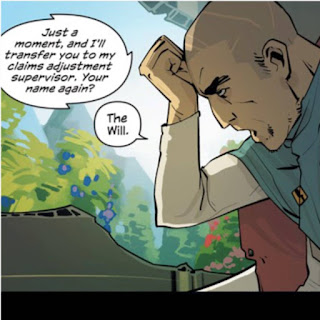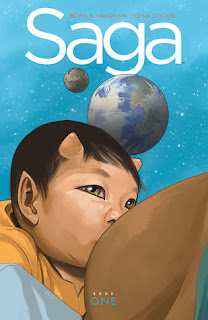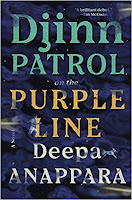The Penguin Book of Japanese Short Stories edited by Jay Rubin
Translations by various people
I started reading a short story a day from this collection on Dec 1, 2019, then got derailed—first by a concussion, then by coronavirus anxiety. I finished it in April with a feeling of triumph. And I loved the book! Extending the reading time probably contributed to my enjoyment because I had time to savour each story. The 34 stories vary widely in content, style and original publication date. A lovely assortment.
My friend Shawn and I discussed one of these stories, "UFO in Kushiro" by Haruki Murakami, and then Shawn made a video:
The Seven Necessary Sins for Women and Girls
by Mona Eltahawy, Audiobook read by the author
Mona Eltahawy's rage against the patriarchy really struck a chord with me. The necessary “sins” in her manifesto are anger, ambition, profanity, violence, attention-seeking, lust and power. I want to join her in dismantling an unjust system. Burn it down! I join her in celebrating the audacity of teenage girls around the world who save themselves and teenage girls who will save the planet. I join her in celebrating women and girls who sin.
We must reject civility. There is nothing civil about racism or misogyny or transphobia. Warnings precede profanity to protect the sensibility of the reader. Where are the warnings that precede patriarchy to protect the lives of women and girls?
Girls know their power. They are born knowing it, which is why patriarchy socializes it out of them and why it extinguishes the pilot light of their anger.
Saga Book One by Brian Vaughan and Fiona Staples
If you haven‘t yet embarked on the Saga bandwagon, what are you waiting for? Adventure, great characters of all types, family dynamics of all types, humour, pathos, a vivid universe and fantastic art. Rereading issues 1-18 in digital format was such a pleasure. Sigh. The Saga graphic novel series is available in digital format through Hoopla at the library. Book One gathers issues 1-18 (Volumes 1-3). Fiona Staples, a comics artist from Calgary, has created the outstanding art.
 |
| Younger writers are always looking for “blurbs,“ one of the few words that sounds exactly as awful as the crime it's describing. |
 |
| "Just a moment, and I'll transfer you to my claims adjustment supervisor. Your name again?" "The Will. As in losing mine to live." |
Saga Book Two by Brian Vaughan and Fiona Staples
Issues 19-36 (Volumes 4-6) are collected in deluxe Book Two. Insurrections on several fronts; drug addictions; several occasions where being “lady folk” is in question; Klara gets tattooed in a women‘s prison; The Will gets fat; The Stalk keeps making posthumous appearances; we see more of gay journalists Usher and Doff; a baby android gets older along with our narrator, Hazel... there‘s so much going on. I could happily reread this every year. Next up on my digital comics reading list is deluxe compilation Book Three.
 |
| But anyone who thinks one book has all the answers hasn't read enough books. |
Whimsical, devastating, and hopeful. It's hard to describe this novella about a young woman living with the trauma of sexual assault. Her traumatic experience manifests as a hummingbird, a constant visible and audible companion. I was reminded of Chanel Miller's memoir, Know My Name: this slip of a book packs similar power, while approaching the subject in an entirely different way.
I picked this gem up at Glass Bookshop in Edmonton, by the way. It was the cover by artist Louise Reimer that that drew me in.
And I think Help. I need Help. But I don‘t say that, because you don‘t say that. You don‘t say you need Help unless you know what Help you need.
Actress by Anne Enright
Audiobook read by the author
Listening to Anne Enright perform her idiosyncratic sentence structure in the pitch-perfect voice of Norah is an absolute delight. It‘s intimate, funny and dark. There is so much nuance in this story of a mother and daughter, family secrets, misogyny, bad sex, Dublin, mental health, and the way our lives are performances. An outstanding audiobook for lovers of character, language and place.
…we kissed endlessly on a window ledge on the corner of Suffolk Street, where I left my bag behind, so drunk was I with kissing, the memory of it lingering for years, even as the window was knocked into a doorway through which people walk now, right through the ghost of our kissing…
The Story of More: How We Got to Climate Change and Where to Go from Here by Hope Jahren
Audiobook read by the author
Jahren makes the case that our world's current state, on the brink of climate disaster, “arises from a relentless story of more.” The statistics are depressing but “doing something is always better than doing nothing.” Consuming less and conserving resources are measures we can take while scientists continue to dedicate their lives to further solutions.
The Story of More is more satisfying than Greta Thunberg's No One Is Too Small to Make a Difference, which was a repetitive compilation of her speeches. Also, if you haven't yet read Hope Jahren memoir Lab Girl, it's also very good.
Barring something awful—famine, plague, genocide or forced control over reproduction—Earth will never again contain fewer than 7 billion people. We must learn to live together if we want to live well.
Henry George [1839-1897] was also right in that most of the want and suffering that we see in our world today originates not from the earth‘s inability to provide, but from our inability to share.
The Mirror and the Light by Hilary Mantel
Audiobook read by Joseph Kloska
This 12-hour audiobook is clearly abridged, even though the edition notes in Overdrive state otherwise. Based on page length of print editions (784-906 pages) I would expect the audio to be at least 25 hours. Nevertheless, I found this thoroughly immersive and engaging, so hats off to narrator Joseph Kloska and to Katie and John Nickell, who are credited at the end of the recording for the abridgment. It's a fitting conclusion to the trilogy that started with Wolf Hall, one of my all-time favourite historical novels. Thanks to Hilary Mantel, “he, Thomas Cromwell,” will have a place in my heart forever.
[Ambassador Eustace Chapuys:] “Henry is a man of great endowments, lacking only consistency, reason and sense.”
[Thomas Cromwell]: "I like your deceit. It makes me think highly of you."
Such a Fun Age by Kiley Reid
Audiobook read by Nicole Lewis
First Look Book Club, a free email subscription which provides sample text from forthcoming books, got me hooked from the opening pages. My 3-month wait for a library copy was worth it. This nuanced exploration of racism and ethics opens with a Black woman caring for a white child and being confronted by a grocery store security guard. Later, the woman says to her white boyfriend: “I don't need you to be mad that it happened. I need you to be mad that it just like... happens.”
Zara leaned in closer. “That's the guy who filmed you that night?!”
“Girl, yes.”
“Why you so sneaky?”
“I didn't think he'd come!”
Still looking over the railing, Shaunie asked, “Is he wearing an Everlane sweater?”
Emira rolled her eyes. “Why are you acting like I know what that is?”
Special mention as a soporific:
Invisible Cities by Italo Calvino
Audiobook read by John Lee; translation by William Weaver
I checked this out from the Hoopla database because Kamila Shamsie recommended it (in The Guardian) as a good choice for reading during the pandemic. I gave up trying to make sense of the content--Marco Polo telling Kublai Khan about fantastical cities he had visited--because I kept falling asleep. Then I realized that this was the book's superpower! I played the audiobook four times through, in 10- or 15-minute segments, whenever I couldn't sleep in the night.





























